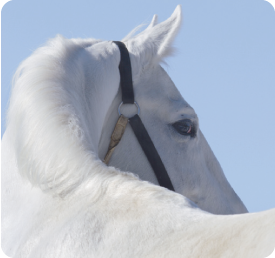
About Equine Osteopathy
Equine Osteopathy can help any horse showing signs of tightness, pain or discomfort.
Andrew has refined the manual manipulation techniques over many thousands of equine treatments. He has found that rhythmic muscle release techniques achieve better and longer lasting results for many horses.
Flamboyant articulation techniques are not indulged in and the focus is on the needs of the individual horse. Your horse’s environment and working conditions are taken into account and treatment is tailored to meet your horses requirements.
Most horses show a significant improvement in flexibility and correctness of pace after the first treatment. This improvement suggests that the horse also experiences significant pain relief.
Your equine osteopath will advise a treatment plan at the first appointment, which will include advice on how you should work and care for your horse following treatment.
Safety and regulation
To become an equine osteopath in our practice you must first qualify as a ‘human’ osteopath, which takes 4 years full time study, and then gain a relevant post graduate diploma in animal osteopathy.
It is important to ascertain the training, regulatory body and insurance cover of anyone treating your horse.
If you see a ‘back man’ not previously qualified as a recognized therapist you may not have any come back if your horse receives poor treatment.
Andrew is registered with the General Osteopathic council (GOsC) and is fully insured.

Conditions Treated
Q & A
Frequently Asked Questions
Question:
Answer:
At the first treatment your equine osteopath will assess your horse whilst being walked up and then trotted up. Once back in the stable the horse will then be assessed for flexibility, mobility, points of tension etc. The osteopath will explain simply and clearly all the issues that are found and also explain the treatment planned for your horse. Your verbal consent is gained before any treatment takes place.
Question:
Answer:
Yes. However, if the owner of the horse is not available then a competent person needs to hold the horse during treatment. The horse should be caught in from the field before the osteopath arrives.
Question:
Answer:
No. Andrew is very experienced and can see even subtle restrictions when the horse is walked and trotted up in hand. His palpation skills are highly developed and he can feel any areas of tightness or restriction.
Question:
Answer:
Andrew has a very quiet calm approach and the vast majority of horses settle very quickly.
Question:
Answer:
The prognosis for the recovery from kissing spines has improved tremendously over the last few years and kissing spines no longer mean the end of riding. Andrew has referred horses for kissing spine investigation by vets and also works closely with vets during rehab.
Question:
Answer:
The treatment of all animals including horses must be controlled by a qualified vet as stated in the Veterinary Surgeons Act 1966. It is illegal for any therapist to treat your horse without your vet’s permission. Astwood Equine Osteopaths has a good relationship with the local vet practices. In most cases a quick phone call to your vet’s reception desk is all that is needed.
Question:
Answer:
Many horse and pet insurance policies cover treatment by osteopaths. Please check with your insurance provider before booking an appointment.
Question:
Answer:
Yes, please see the fees page for further information.
Question:
Answer:
Depending on the condition/injury your horse had it is likely that your horse will still be feeling sore for a day or two after treatment. It takes a couple of days for everything to settle down. If your horse was not sore before the treatment they will just feel like they have had a good work out. Your equine osteopath will advise you on care of your horse following treatment.
Question:
Answer:
Most horses with straightforward issues usually only require 1 or 2 treatments to see significant improvement. However some horses have more complex issues and require further treatments. Your equine osteopath will advise how many treatments may be needed at your first appointment.
Question:
Answer:
Please call Andrew directly on 07725 219861.
Andrew will call you back on the same day, please leave a contact number for the evening too.


